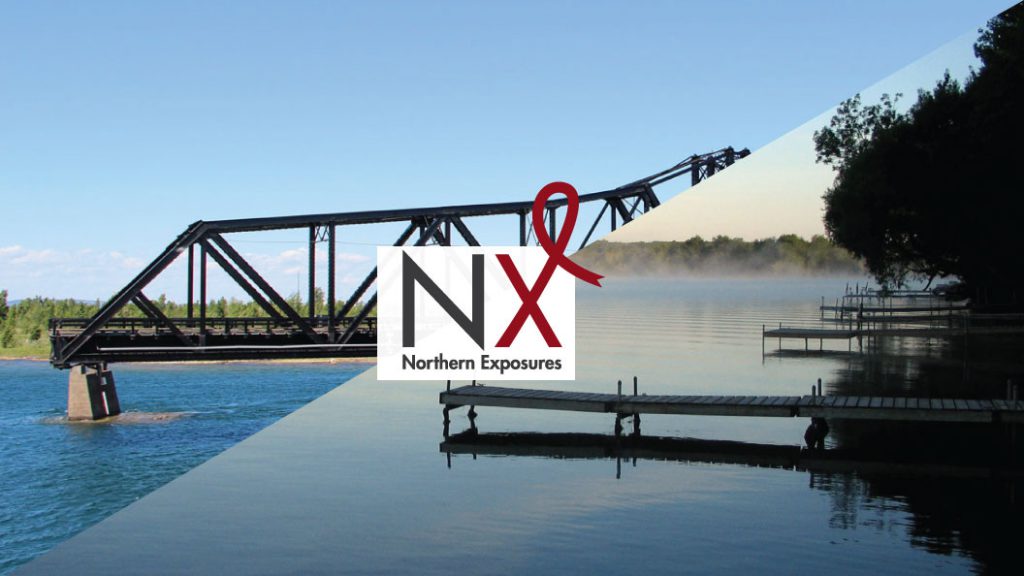Mark Gilbert of the OHTN presented a snapshot of key trends for HIV in Ontario with a focus on the North, drawing on data collected by the Ontario HIV Treatment Network Cohort Study (OCS) and Public Health Ontario. It’s important to note that these data sources are imperfect: 25% of new diagnoses do not include information on risk factors, and 40% do not include information on ethnicity.
Overall, the data show a sustained decline in the number of new diagnoses in Ontario. Many trends in the North are true of the province as a whole. However, the data also show some key differences between the North and the rest of the province. In Northern Ontario:
- The majority of diagnoses are among people who inject drugs.
- Thirty percent of new diagnoses are among Indigenous people.
- There was a small increase in new HIV diagnoses among women in 2014 (likely due to injection drug use).
From 2009 to 2011, 2.7% of new HIV diagnoses in Ontario were among Indigenous people. Overall, Indigenous people in Ontario are 1.7 times more likely to be HIV-positive than then general population. The main “risk exposure” categories for women (i.e., the main ways in which women contracted HIV) were heterosexual sex and injection drug use; for men, the main risk exposure categories were injection drug use and same-sex sexual activity.
Doe O’Brien-Teengs of the OHTN’s Indigenous Research Steering Committee noted that the risk exposure categories used in epidemiology understate complexity. There is a need within Indigenous communities to talk about lives that are complicated, and to pay attention to ways in which identities overlap and intersect: a heterosexual woman may have sex with a man who has sex with men. It’s also important to assess syndemic factors – such as ongoing colonization – and to ask why HIV rates are higher among Indigenous people. Instead of saying that someone has contracted HIV because he or she is an “injection drug user,” there is a need to ask why people are using substances to cope, and to then ask how to help communities support harm reduction and improve access to health care services. As well, the fact that nearly half of HIV-positive Indigenous men in Ontario report same-sex sexual behaviour highlights the need to weave two-spiritness back into communities.
“The only time we’re really going to be healed as Nations is when two-spirit people are integrated back into our home communities and back into our cultures.”
Indigenous people connected to care and on antiretroviral therapy generally do well, but O’Brien-Teengs noted that not everybody is connected to care. She emphasized that care is pivotal to saving people’s lives, and that we need to understand barriers to accessing care more fully.
Generally speaking, living in a rural area is associated with a lower uptake of evidence-based therapies, and poorer health outcomes. Denise Jaworksy of the University of Toronto noted that research from the United States shows that people living in rural areas tend to be diagnosed with HIV later and at a more advanced stage of the disease. Work in British Columbia has shown that people in Northern areas are more likely to fall out of the care cascade, with only 66% of HIV-positive people in Northern B.C. achieving viral suppression, compared to 87% in Vancouver.
Jaworsky presented on a CHIWOS (Canadian HIV Women’s Sexual and Reproductive Health Cohort) study that compared women living with HIV in Northern Ontario to women from other regions of the province. The study found higher rates of substance use among Northern women, as well as higher rates of HCV. However, unlike the Northern B.C. study, it did not find significant differences in terms of former or current ART use, or current viral load status.
The major differences that the CHIWOS study found had to do with barriers:
- 20% of women in the North had travelled more than three hours for HIV care, compared to only 1% of women in the rest of the province.
- 14% of women in the North had uprooted themselves and moved in order to receive HIV care, compared to only 5% of women in the rest of the province.
Resources
- Ontario Aboriginal HIV/AIDS Strategy (OAHAS)
- Ontario HIV Epidemiology and Surveillance Initiative (OHESI) report on HIV diagnoses in Ontario (2014), including information on exposure category and health region
- Differences in HIV health outcomes between urban and rural residents (U.S.)
- Differences in HIV care cascade across regions in British Columbia
